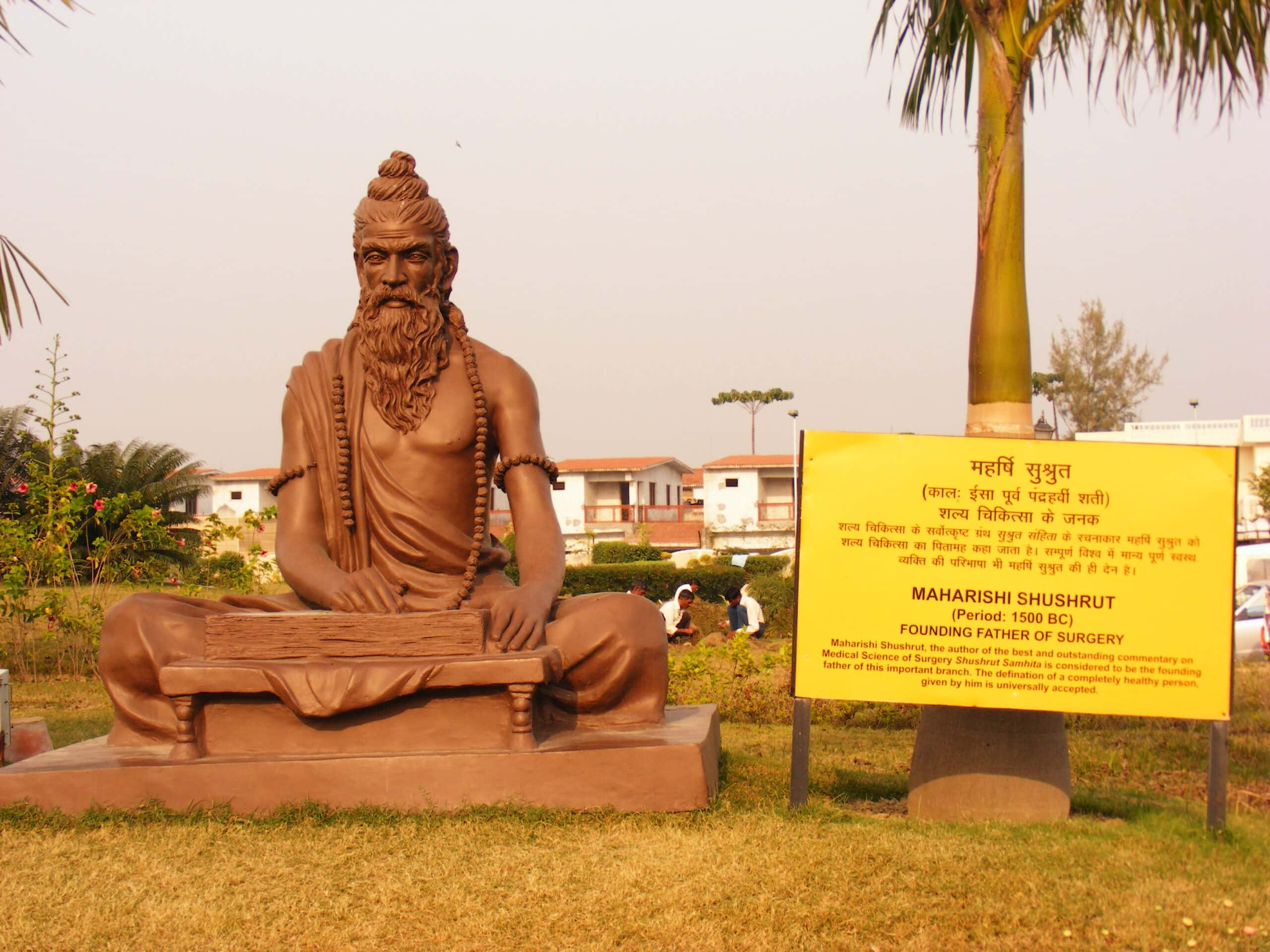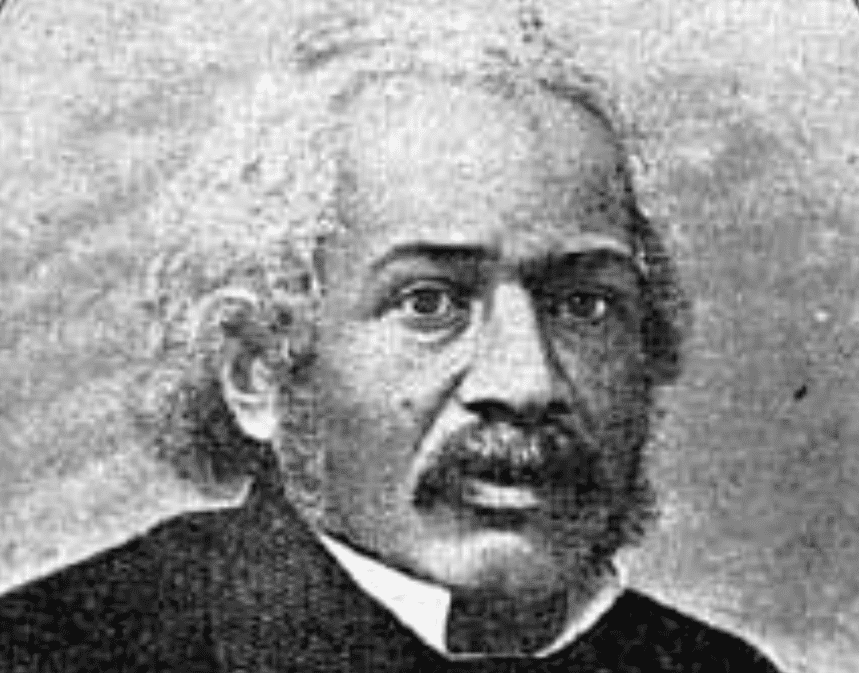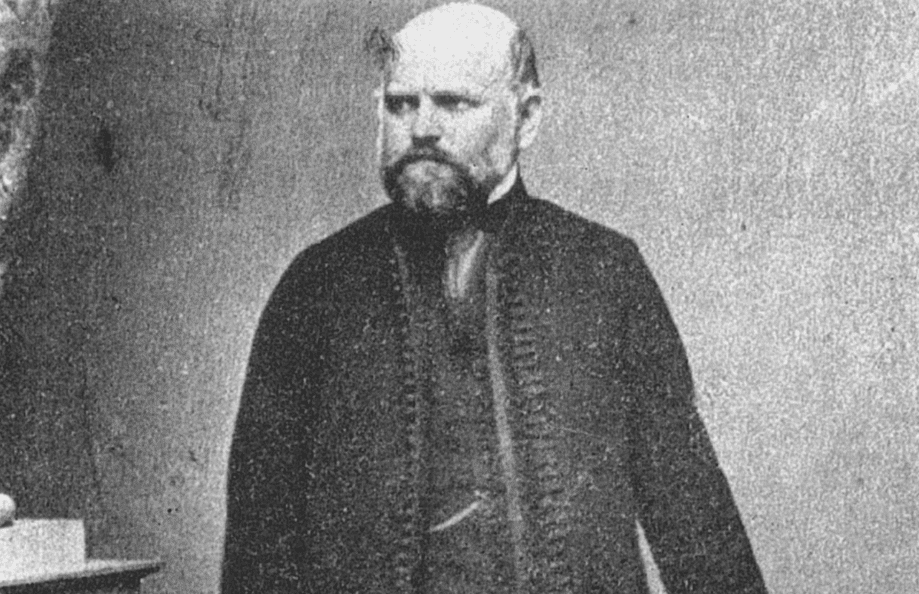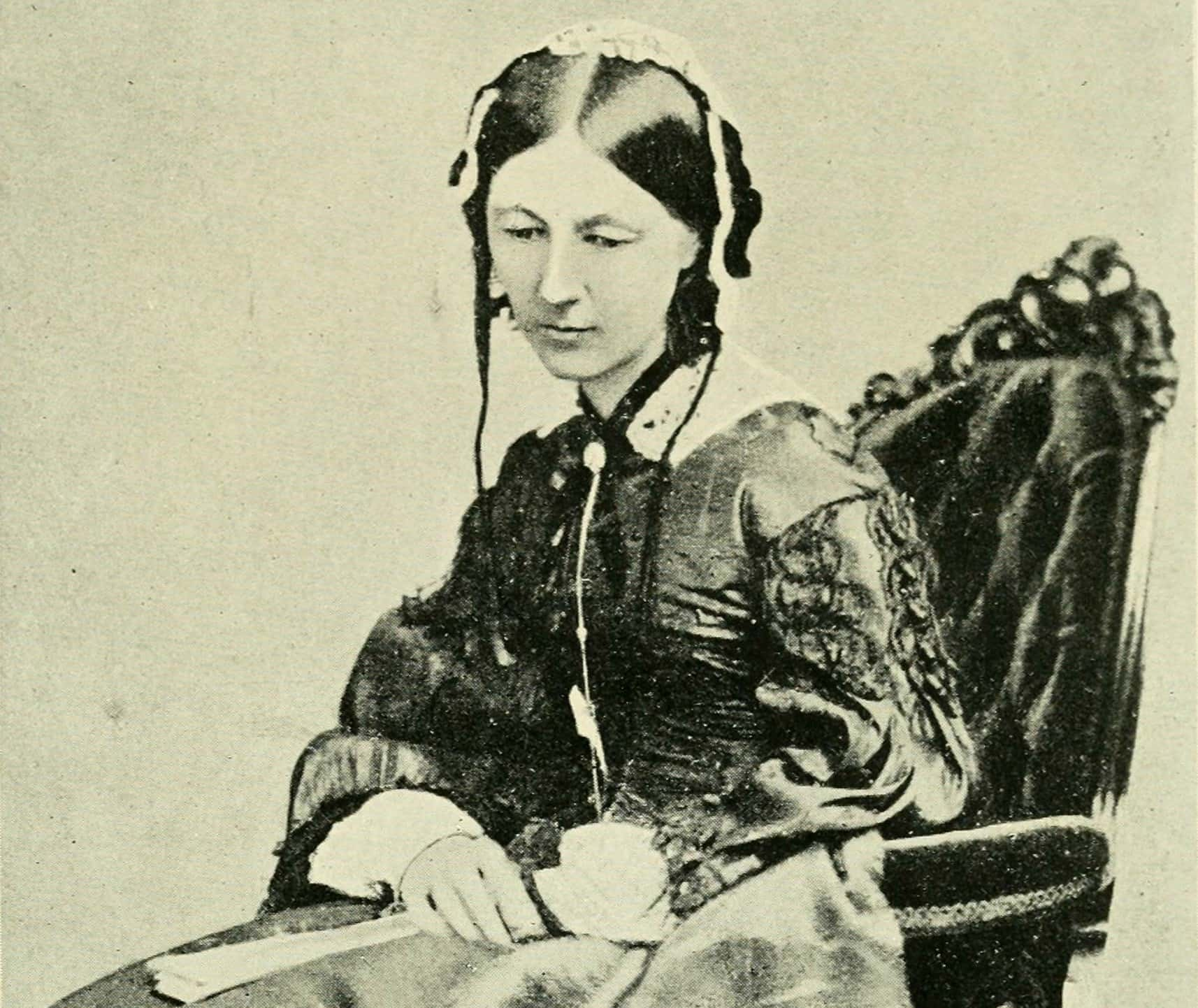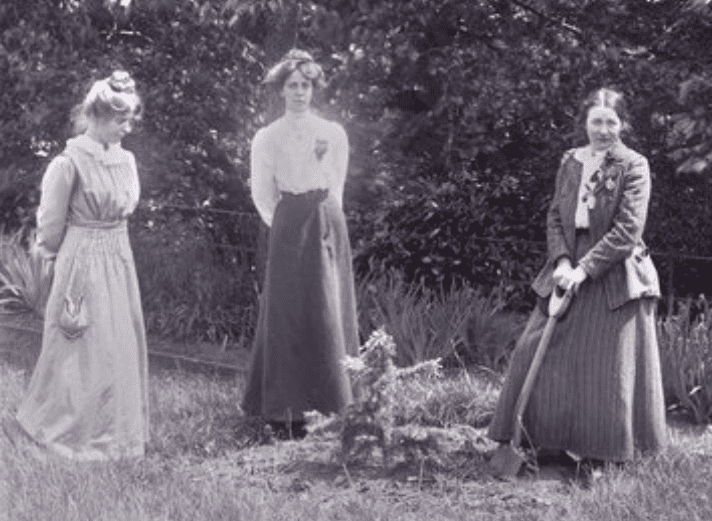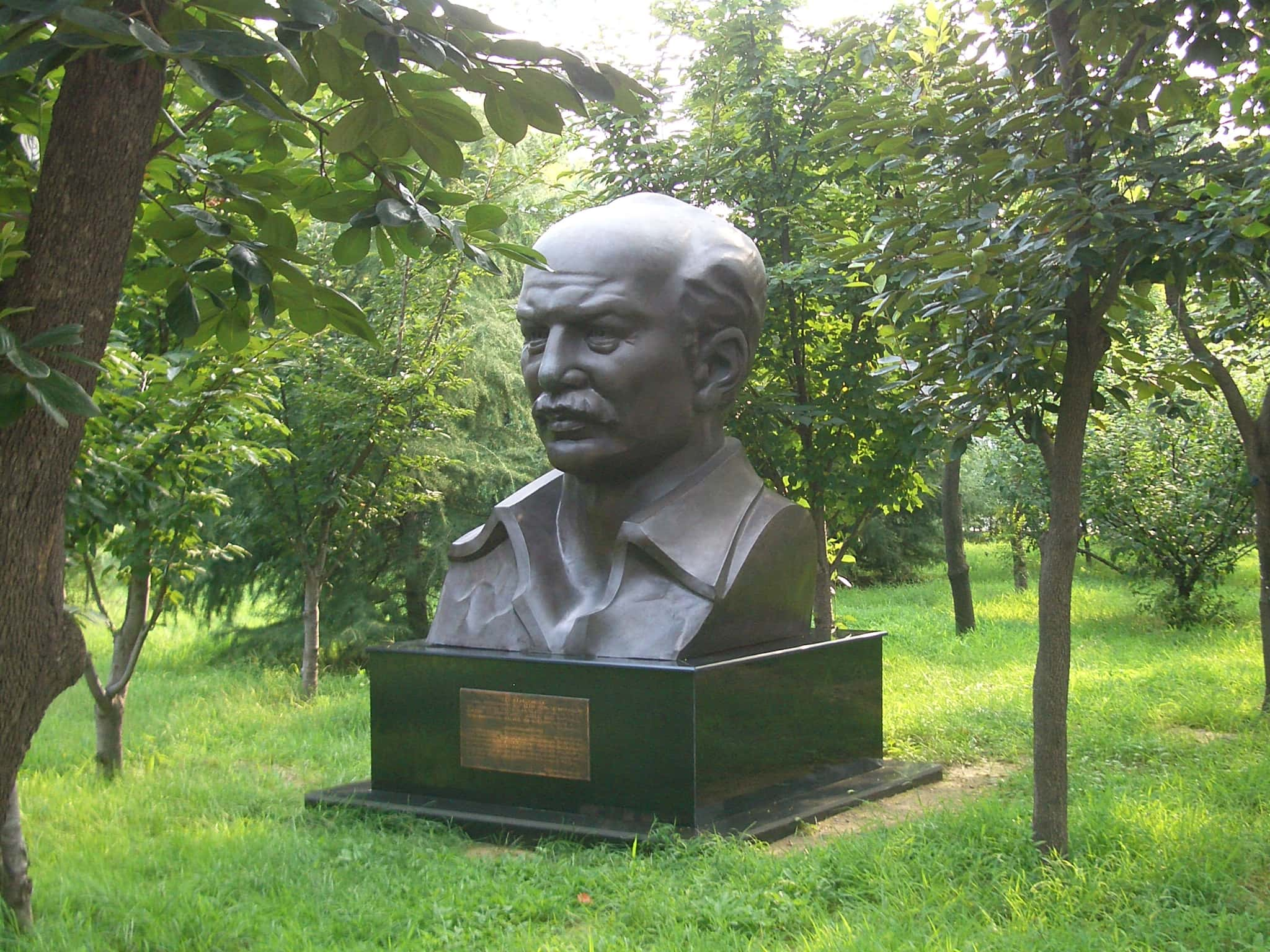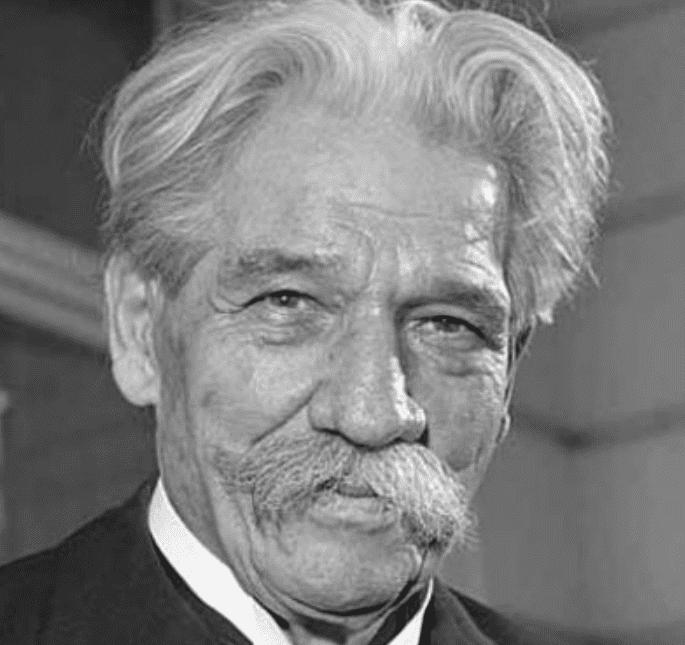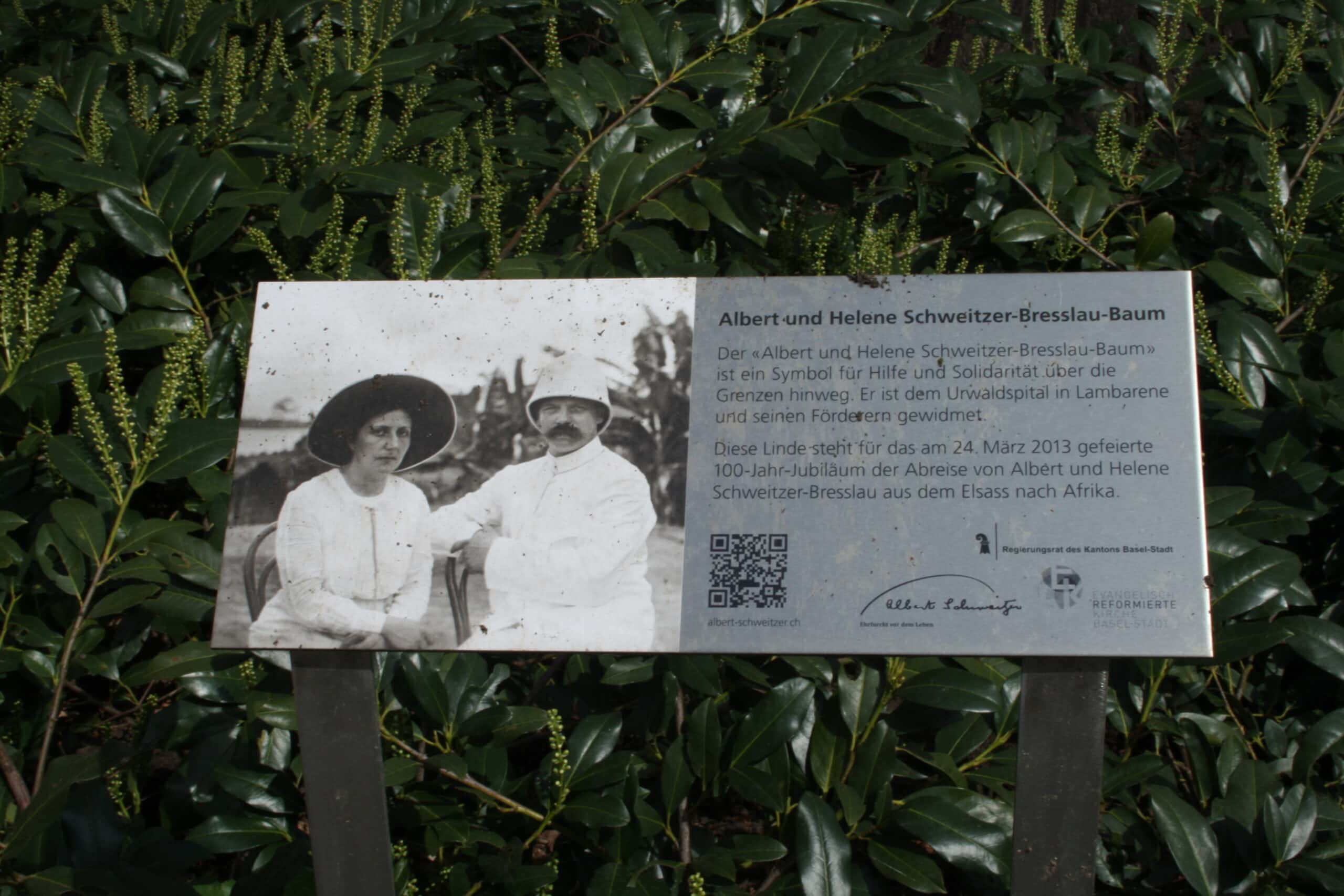From their earliest days as shamans to today’s modern physicians, doctors and nurses have always been among society’s most respected people. Some have even become celebrities, thanks to their medical breakthroughs, humanitarian efforts, or their eccentric habits. Others are infamous for violating the caregiver’s most-important promise—do no harm. Whether they made history for good or for bad, here are 50 facts about the famous doctors and nurses of all time.
1. Urine Good Hands
Let’s start with Hippocrates, the founding father of physicians who gave the Hippocratic Oath its name. Hippocrates was the first westerner to recognize that sickness had natural, rather than supernatural, causes. He wrote more than 70 medical texts, gave cancer its name, and even discovered diabetes, which he tested with a strange task: tasting a patient’s urine.

2. Universal Healthcare
Hippocrates also authored the Hippocratic Oath, but the oath modern doctors take is considerably different from the version that Hippocrates wrote. Multiple revisions changed the document over the years, with the most recent and significant in 1964. Hippocrates’ earliest oath forbade, among other things, expecting payment for medical instruction.
3. Misquoted
The original version of the Hippocratic Oath does not feature the phrase, “First, do no harm". Neither do later versions, as a matter of fact. The famous phrase was Hippocrates’ own, but it appears in his treatise on epidemics.
4. Eastern Medicine
Hippocrates is widely considered the father of medicine in the west, but another man actually predates him. Sushruta was an Indian physician who lived around 600 BCE. He composed his Samhita, or “Compendium,” which includes techniques for everything from cataract surgery to c-sections and tooth extractions to fake limbs. Sushruta’s contributions to medical science were so significant to ancient India that he even got a shout out in the Mahabharata.
5. All in Jest
They say laughter is the best medicine. That was certainly true for Rahare, court jester to King Henry I. According to legend, Rahare fell ill while on a pilgrimage to Rome. He had a vision of St. Bartholomew, upon which he immediately recovered. Rahare returned to England a changed man. He gave up the jestering life and founded St. Bartholomew’s Hospital.
6. His Holiness, MD
When his dream to become Bishop of Lisbon failed, Pedro Julião returned to his first career: physician. Julião’s skills eventually landed him a sweet gig as the official doctor of Pope Gregory X, which in turn led to an appointment as Cardinal Bishop of Tusculum. Julião climbed that ladder all the way to the papacy. Pedro Julião, also known as Pope John XXI, remains the only doctor to ever become pope.
7. On the Front Lines
The top surgeon in Napoleon’s Grande Armée, Dominique Jean Larrey was responsible for several important innovations in medicine. He invented the ambulance, assembled the first medical corps, and established the earliest rules of triage. Larrey’s innovations were born out of necessity. Working in the thick of battle during the Napoleonic Wars, he once performed 200 amputations in a single day!
8. Dr. Popular
Napoleon’s men adored their master healer Larrey. During Napoleon’s retreat from Russia, they showed their gratitude by passing him forward, crowd-surf style, so that he could escape from danger. They needn’t have bothered: Larrey’s insistence on operating on anyone who was wounded, no matter what side they were on, won him universal respect. During the Battle of Waterloo, the Duke of Wellington gave specific orders that no one could shoot Larrey, even though he was technically part of the enemy's forces!
9. The Price is Not Right
The Welsh-bred, London-educated physician William Price was a strange guy. For one, he was a nudist and especially considered socks to be unhygienic. When he had to wear clothes, Price preferred to dress head to toe in emerald green. He denounced marriage, extolled vegetarianism, and began practicing a druidic religion of his own making. He developed his own version of the Welsh language, which he insisted was actually ancient Welsh. Soon, he began to claim that he, William Price, would personally restore Wales’ independence. In short, he was bats.

History's most fascinating stories and darkest secrets, delivered to your inbox daily.
10. Half Quacked
Price’s…eccentricities spread to his medical practice as well. Price believed vivisection was immoral and refused to treat patients who smoked. He also might have been the very first anti-vaxxer, publicly denouncing inoculations just as they were coming to the fore of medicine. On the other hand, Price obsessively washed any coins he received, convinced that germs could spread diseases. Hey, even a stopped clock is right twice a day.
11. Holy Smoke
Price also believed in cremation, a major taboo in Great Britain at the time. In fact, when Price cremated his recently deceased son, the authorities put him on trial. But when local authorities discovered there was no law against cremation, they had to release hm. Despite his release, Price was despondent. He had been certain the son, whom he named Iesu Grist, was the second coming of Jesus Christ.
12. The Pioneer
Born into slavery and denied an education, James McCune Smith never gave up on his dream. Emancipated when the State of New York abolished slavery in 1827, McCune Smith applied to Columbia University, only to be denied entry because of his race. Undaunted, and supported by abolitionist benefactors, McCune Smith travelled to Scotland and enrolled in the University of Glasgow. Despite many hurdles, McCune Smith graduated at the top of his class. After an internship in Paris, McCune Smith returned to the United States as America’s first Black doctor.
13. Free at Last
Though he continued to face discrimination, McCune Smith enjoyed an illustrious career that saw him open America’s first Black-owned pharmacy, treat patients of all races at his private practice, and serve as the resident physician of New York City’s Colored Orphans Asylum. He wound down his career as a professor of anthropology at Wilberforce College.
14. So Close
Through it all, McCune Smith remained active in the abolitionist movement, working with Frederick Douglass to create the National Council of Colored People. He fought for enslaved Black Americans to be given the opportunity to thrive as he had thrived, but sadly perished just weeks before the ratification of Emancipation Proclamation.
15. Mad Scientist
Doctor was just one of Edward Rulloff’s many, many roles. The 19th century polymath was also a lawyer, a teacher, a carpet designer, a phrenologist, a philologist, an author, and, ah yes, a mass killer. Rulloff spelled doom to as many as five people, sometimes relying on his expertise in botanical medicine to poison his victims.
Though the authorities caught him on almost every occasion, Rulloff’s understanding of the law allowed him to slip away time and again. Between stints behind bars, Rulloff supported himself by working as an author or a university professor, but always found himself running afoul of the law.
16. Irreplaceable
Rulloff was caught once and for all in 1870, after he ended a grocer's life during an attempted theft. By now, “The Genius Killer” had some fans in high places. In the New York Tribune, Horace Greeley argued that Rulloff’s intellect was too valuable to be lost to the gallows. Mark Twain, with tongue firmly in cheek, offered to find a suitable replacement—one without so much brain power.
17. Heavy Hangs the Head
When they say that Rulloff had a giant brain, they mean it. After his hanging in 1870, the coroner extracted Rulloff’s brain and found it to weigh nearly four pounds! That makes it the second-largest brain ever recorded. Today, Ruloff's giant brain sits on display at the Psychology Department of Cornell University.
18. Cut to the Chase
In the days before anesthetic, the marker of a great surgeon was speed. The quicker surgery wrapped up, the less pain a patient had to endure. The quickest of them all was the Scottish surgeon Robert Liston, who earned the nickname “the fastest knife in the West End". He could amputate a leg in under two and a half minutes! Unfortunately, Liston’s enthusiasm sometimes got the better of him.
It wasn’t unusual for him to nick an artery, or even accidentally castrate a patient. It’s a good thing anesthetic came along when it did. Liston was the first surgeon in Europe to use anesthetic, which finally allowed him to take his time.
19. Three for One
Liston is best remembered today for one operation which had an astounding 300% mortality rate. In characteristic fashion, Liston was slashing his way through a routine surgery when he sliced through his assistant’s fingers, cutting them clean off. A spectator perished of shock at the sight, and both the assistant and the patient contracted fatal infections.
20. From the Cradle to the Grave
As chief resident at the Vienna Hospital’s maternity ward, Ignaz Semmelweis was perplexed by the mounting infant mortality rate at the hospital. 10% of infants born at the hospital’s First Clinic perished of puerperal fever. When Semmelweis realized the hospital’s Second Clinic had a much lower rate of the fever, he set out to find the root of the problem.
Semmelweis discovered that the medical students of the First Clinic frequently ventured from the autopsy room to the maternity ward. As they made the trip, they carried “cadaverous particles” that infected the new mothers and their infants. The Second Clinic, staffed solely by midwives, did not have this problem.
21. The Hand Sanitizer
Semmelweis’s solution sounds ridiculously simple to modern ears: wash your hands! At the time, however, it was a radical suggestion. The medical establishment in Vienna mocked and ridiculed Semmelweis so much that eventually, he got fired and even left the city.
22. From Doctor to Patient
Semmelweis took a much less prestigious position at a small hospital in Budapest. While his insistence on hand-washing got astounding results, he still faced an uphill battle. In a series of letters to medical journals across Europe, Semmelweis became increasingly aggressive and dismissive of his critics. In his private life, he began drinking and engaging in all sorts of erratic, inappropriate behavior. His family saw no other option but to have the once-brilliant physician committed to an asylum.
23. A Dirty Trick
The story of Ignaz Semmelweis is tragic, with his life ending in one final, cruel irony. Upon Semmelweis' arrival at the asylum, a guard severely beat him. The one-time doctor caught a fatal gangrenous infection that might have been prevented, had he received the opportunity to properly clean his wounds.
24. Vindication
It took more than 20 years for Semmelweis’ ideas to gain broad acceptance. Notable figures as Louis Pasteur and Joseph Lister championed his beliefs, and today people recognize him as a pioneer of antiseptic medicine. Though sadness marked his final years, Semmelweis gets the last laugh. After he left Vienna in disgrace, today, there is a hospital named for him.
25. Head Nurse
Nurses take an equivalent of the Hippocratic Oath called the Nightingale Oath. It is named for Florence Nightingale, the 19th century social reformer, considered the founder of modern nursing. In honor of her contributions, Nightingale’s birthday, May 12, is now International Nurses Day.
26. The Lady With the Lamp
Victorian England knew Nightingale as “the Lady with the Lamp,” a saintly, inexhaustible woman who tended to the wounded of the Crimean War. From her hospital near Istanbul, reports sailed back to London praising and romanticising Nightingale and her efforts. In reality, though, Nightingale had a tough job.
With a staff of 53 volunteer nurses, whom she trained herself, Nightingale tended to thousands and thousands of wounded men. By enforcing strict rules about hygiene and medical practice, Nightingale reduced the death rate at her hospital from 42% down to 2%.
27. Vital Stats
Nightingale gained fame as a nurse, but she had another talent hidden up her sleeve. Nightingale was also an expert statistician. Her ability to turn anecdotal experience into hard data proved to be extremely valuable when she had to persuade the public—and politicians—that proper sanitation was, shocker, important to public health. She loved graphs, and even developed an early kind of piece chart.
28. Sexy Nurse
Florence Nightingale left behind a wealth of journals, with certain passages revealing a different private life than most people would have expected. Nightingale never married and some researchers believe she was a member of the LGBTQ+ community. As Nightingale herself boasted, "I have lived and slept in the same beds with English Countesses and Prussian farm women. No woman has excited passions among women more than I have".
29. A Child Could Do It
America’s answer to Florence Nightingale, Clara Barton, got her start early. When her brother, David, fell off the roof of a barn, 10-year-old Clara tended to him herself, long after doctors had given up hope of a recovery. Clara taught herself how to administer useful medicines, including leeches, and nursed her brother back to perfect health.
30. Earning Her Wings
Clara Barton went on to become a teacher and a clerk for the US Patent Office. But her passion for nursing reignited with the start of the Civil War. She soon found herself volunteering at the front lines, tending Union and Confederate men alike. Barton worked against a constant tide of casualties and frequent supply shortages. When her hospital ran out of bandages, she figured out a way to use cornhusks. Barton’s resourcefulness and dedication won her renown on both sides of the Mason Dixon as “the Angel of the Battlefield".
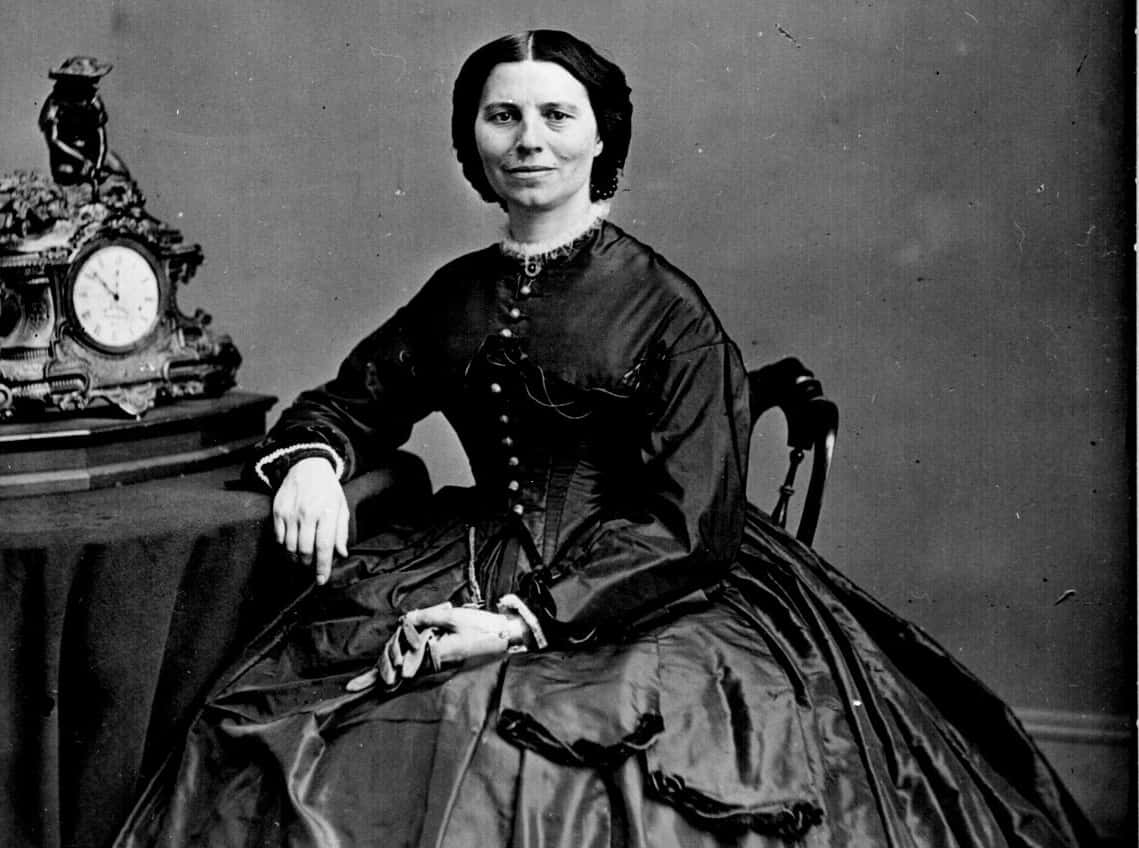 Wikimedia Commons, Mathew Brady
Wikimedia Commons, Mathew Brady
31. Cross Your Heart
After the conflict ended, Barton joined the lecture circuit, advocating for women’s suffrage, civil rights, and the identification of missing soldiers. It was during one of these speeches that Barton met Louis Appia, a Swiss physician and founder of the Red Cross. At Appia’s encouragement, Barton founded an American version. Since 1881, the American Red Cross has provided medical and disaster relief for crises all around the world.
32. Sibling Rivalries
Josephine Bradham Burton will go in history down as the first registered nurse in the United States. Her brother became even more famous, however, thanks to his invention, “Brad’s Drink,” later renamed Pepsi.
33. Double Duty
Born into a wealthy Brooklyn family, twin sisters Dorothea and Gladys Cromwell abandoned their privileged life to volunteer as Red Cross nurses during WWI. Their dedication earned them high praise from their superiors, and because identical twin nurses isn’t something you see every day, they became minor celebrities at the frontlines of France.
34. Twin Tragedies
Dorotha and Gladys survived to the end of WWI, and soon they headed back to America. Sadly, the horrors of the conflict left both Cromwell sisters afflicted by shell-shock—what we know call post-traumatic stress disorder. They leapt, together, from the rails of the La Lorraine as it sailed toward New York. In 1919, the Red Cross published a book of Gladys Cromwell’s poems, in memory of the twin nurses. They received the Croix de Guerre award posthumously.
35. A Breath of Fresh Air
Norman Bethune’s medical education encountered some serious setbacks, first WWI, and then a bout of tuberculosis. Confined to a sanitorium in upstate New York, Bethune did not take his diagnosis lying down. Instead, he began studying a risky new treatment which involved collapsing the patient’s lung and letting it heal naturally.
Doctors at the sanitorium were nervous about the procedure, but Bethune insisted. He even volunteered to be the first test case. Bethune went on to make a full recovery.
36. The Hammer and Scalpel
An early proponent of socialized medicine, Bethune became a full-fledged member of the Communist Party, and soon began looking for ways to support the cause. Bethune travelled to China on the eve of the Revolution and became the medical advisor for Mao’s Eighth Route Army. He helped introduce modern medical techniques to rural China, including an invention of his own—the mobile blood bank. True to his ideals, when he wasn’t treating wounded soldiers, he tended to impoverished villagers.
37. Mao You Know the Rest of the Story
Like his predecessor, Ignaz Semmelweis, Norman Bethune suffered an ironic demise. The inventor of the mobile blood bank cut his finger during surgery. After a fatal case of blood poisoning, he met his maker at just 49 years old. Bethune's friend and leader, Mao Zedong euglogized him in a touching essay titled In Memory of Norman Bethune. Throughout the 1960s, Chinese schoolchildren read the text and helped spread the doctor's fame.
38. Late Registration
Albert Schweitzer was already an influential theologian, published author, and renowned concert organist when he decided to become a doctor. At age 30, hoping to improve his chances of becoming a missionary in Africa, he enrolled in medical school at the University of Strasbourg. After eight years getting his degree, he finally arrived in Africa.
39. A Nobel Pursuit
Schweitzer established a hospital in Lambaréné, in what is now Gabon. Using the income from his speaking tours as a theologian, and his performances as an organist, he eventually expanded the hospital to 70 buildings, including a “leprosarium". A true jack-of-all-trades, Schweitzer served as the chief surgeon and physician at the hospital, as well as the chaplain, administrator, superintendent and PR man. Schweitzer’s humanitarian efforts, in Africa and abroad, won him the Nobel Peace Prize in 1953.
40. It’s A Gas
Schweitzer could do it all, but that didn’t mean he could do everything by himself. His wife, Helene, took up nursing in order to pitch in at the hospital, and became a skilled anesthesiologist.
41. Lifetime Achievement
At just 32, Sir Frederick Banting became the youngest ever Nobel Laureate for discovering insulin. Banting’s work was so vital that the Canadian government gave him a lifetime annuity to concentrate on his research. Sadly, Banting did not enjoy this privilege long. He passed on before his 50th birthday, the victim of a plane crash near Musgrave Harbour, Newfoundland.
42. Astrophysician
Of all the honors bestowed upon Banting following his demise, one sets the standard. “Banting,” a four-mile-wide impact crater on the surface of the moon, is named for the doctor’s accomplishments in aviation medicine. The crater, which lies in the middle of the lunar Sea of Serenity, makes up part of the “man in the moon".
 Wikimedia Commons Frederick Banting
Wikimedia Commons Frederick Banting
43. The Art of Medicine
Close friends with several members of Canada’s “Group of Seven,” Banting went on tours of Canada’s north with the artists AY Jackson and Lawrence Harris, painting landscapes. Though widely acknowledged as a gifted amateur artst, Banting would not sell his paintings. Instead, he asked prospective buyers to acquire paintings by his favourite painters, then offer a trade.
44. The Doctor Who Wasn’t
Among Ferdinand Demara’s many guises were an engineer, a policeman, a prison warden, a psychologist, a lawyer, and two different kinds of monk. The serial imposter had an extraordinary memory, and could convincingly pose as just about anyone, but his most legendary con came in 1952. Assuming the name of Joseph Cyr, Demara found himself serving as a surgeon aboard the Canadian destroyer the HMCS Cayuga.
As the ship’s sole surgeon, Cyr performed dozens of surgeries; he prepared by speed-reading and memorizing whole sections of a general surgery textbook. He was so successful that he never aroused suspicion.
45. Busted
If Demara was so great, how did he get caught? Well, tales of the skilled young surgeon soon made the Canadian news, where they happened to be seen by one Mrs. Cyr. She was quite certain that the real Joseph Cyr, her son, was out of the navy and practicing medicine in Grand Falls, New Brunswick. When the Canadian navy heard about the deception, they “discharged” Demara from his post, but let him off the hook, rather than give the embarrassing story any more publicity. With that, Ferdinand Demara—if that was his real name—disappeared again.
46. The Most Beautiful Doctor in the World
Brazilian beauty Lúcia Petterle began competing in beauty pageants as a distraction from the stress of medical school. After her big win at the 1971 Miss World competition, she returned to the University Gama Filho to finish her degree specializing in endocrinology.
47. The Widower
Haing S. Ngor was a practicing surgeon in Cambodia when the Khmer Rouge overthrew the government. Along with other citizens of the capital, Phnom Penh, Ngor and his pregnant wife were moved to a concentration camp. The Khmer regime was hostile to intellectuals and professionals like doctors, and Ngor had to hide his skills or risk execution.
While interred, complications arose in Ngor’s wife’s pregnancy. Ngor knew what to do, but exposing himself meant spelled doom for himself, his wife, and their unborn child. Ngor could only watch helplessly as his wife suffered and eventually perished. He never remarried.
48. The Role He Was Born to Play
After the fall of the Khmer Rouge in 1979, Ngor immigrated to the United States. Unable to practice as a doctor, Ngor took up acting. He turned out to be pretty good at it: His very first role, a supporting part in The Killing Fields, won Ngor an Oscar for Best Supporting Actor.
49. Case Closed?
Ngor’s career was cut short in 1996, when he passed on in an apparent theft-gone-wrong. Though three reputed gang members were convicted of the offense, many still believe Ngor’s murder was politically motivated. They point to the fact that none of Ngor’s cash or credit cards were stolen. The only thing missing was a locket containing a picture of his wife.
50. No Laughing Matter
Haing S. Ngor was the subject of a joke on The Simpsons. In the episode “Team Homer,” Homer implies he has stolen Ngor’s Oscar. Ngor’s murder, one month after the episode originally aired, led animators to revise the joke, rather than risk poor taste. In edited reruns, Homer steals the Oscar from Don Ameche.
Sources: 1, 2, 3, 4, 5, 6, 7, 8, 9, 10, 11, 12, 13, 14, 15, 16, 17, 18, 19, 20, 21, 22, 23, 24, 25




